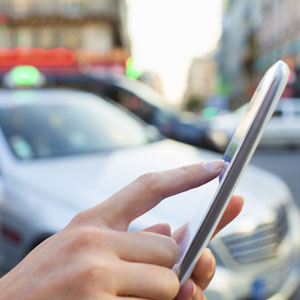 Apps like Uber and other mobile on-demand services have become a disruptive force because of their ability to satisfy consumer intent via mobile dispatched, tangible goods and services. Aside from rides, new offerings allow consumers to order valet service to park your car in the cheapest spot, order a house-call from a doctor visit you when you are sick, and arrange for deliveries of all kinds of goods, from groceries to marijuana. There’s an Uber for Everything Now and it’s all controlled from your mobile device.
Apps like Uber and other mobile on-demand services have become a disruptive force because of their ability to satisfy consumer intent via mobile dispatched, tangible goods and services. Aside from rides, new offerings allow consumers to order valet service to park your car in the cheapest spot, order a house-call from a doctor visit you when you are sick, and arrange for deliveries of all kinds of goods, from groceries to marijuana. There’s an Uber for Everything Now and it’s all controlled from your mobile device.
This trend continues beyond matching customers with personal services, as white collar jobs apps continue to emerge which connect professional and office workers with short term business opportunities. But with these conveniences there are questions and concerns what the future holds for this on-demand economy driven by mobile technology.
Declared Intention with the Push of a Button
With the push of a button, a swipe, or tap of the watch, consumers can announce their desires, from “pick me up” to “park my car”, or “bring me something”. These application can combine that consumer’s request with their preset preferences and current location to generate very specific orders. The experience for users is streamlined and uncomplicated.
Costs for the product, as well as transaction fees, are seamlessly charged to the user’s stored payment mechanism. This frictionless approach provides an added convenience, but also encourages the user to buy without consideration of the costs.
A Mobile Dispatched Army of Laborers
With one tap or swipe these services send out consumer’s requests to nearby workers who clamor for this “micro-job”. With each accepted transaction, these workers are effectively working for the consumer who summoned them, and just as they were hired with the push of a button, when the transaction is complete, the worker is summarily dismissed just as efficiently. To support this model, most on-demand workers are sub-contractors to the service company they are being dispatched for, and may in fact be simultaneously on-call, waiting for dispatch instructions from multiple services.
It’d be easy to make comparisons between consumers, summoning this work at the push of a button and digital overlords, who task an army of laborers. From this social perspective, it’s easy to see why the earning opportunity of these workers is under close scrutiny.
Scalability & Sustainability
There are several concerns on the sustainability of the on-demand economy. So far, it has been successful in large cities where more people are willing to pay for these conveniences. The question remains if this will translate to smaller cities where there will likely be less demand.
Also, in question is whether tech companies using temporary workers will be able to uphold the same level of service as your favorite local restaurant or even a hospital. The other concern is how it will affect the workers who lack rights and protections given to employees.
Want to understand how the rise of the on-demand economy and other mobility influenced paradigm shifts are impacting your business and also creating opportunities? We can help.






